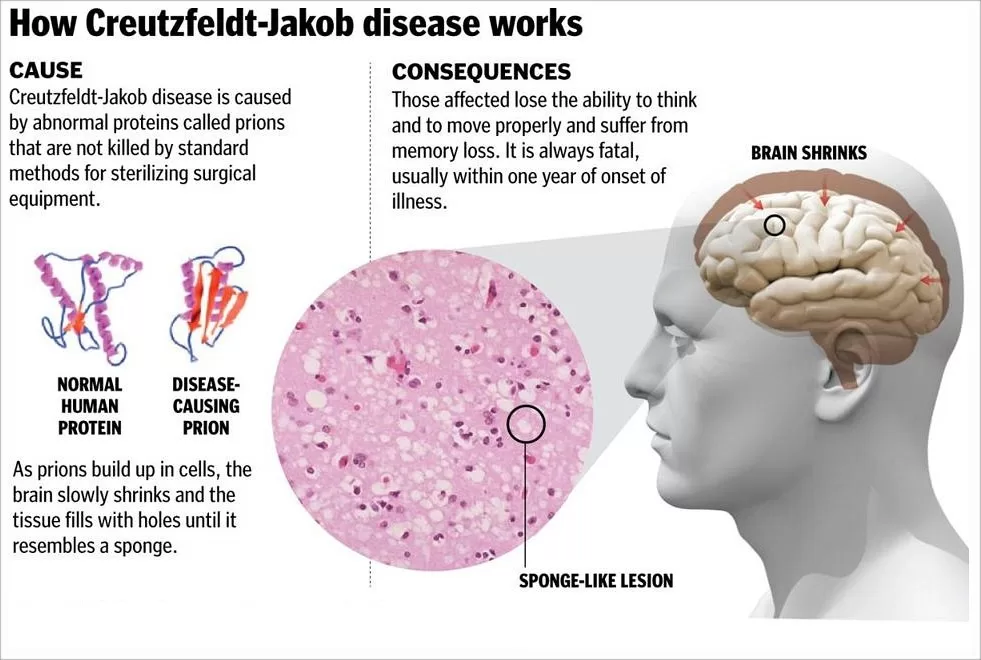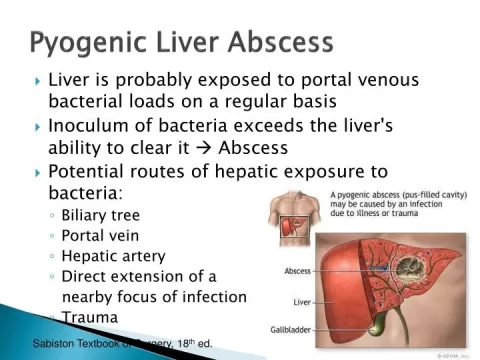Creutzfeldt-Jakob Disease, often abbreviated as CJD, represents one of the most perplexing and devastating neurodegenerative disorders known today. Characterized by rapid cognitive decline and severe neurological impairment, CJD stands as a cruel reminder of the complexities surrounding prion diseases, which involve misfolded proteins wreaking havoc in the brain. Notably, iatrogenic CJD (iCJD) has emerged as a significant concern, particularly in individuals who have received treatments like cadaveric growth hormone derived from human sources. The symptoms of CJD can manifest unpredictably, often resembling other neurological issues before manifesting into full-blown dementia and motor dysfunction. With an emphasis on awareness and early detection, understanding the nuances of CJD is crucial for clinicians managing patients at risk due to past medical treatments.
Creutzfeldt-Jakob Disease, commonly referred to as CJD, is a rare yet severe transmissible spongiform encephalopathy. This disorder primarily results from abnormal prion proteins, leading to fatal deterioration of key cognitive and motor functions. Clinically, various forms of the disease exist, including sporadic, genetic, and iatrogenic variants, including the particularly insidious iatrogenic CJD associated with past medical treatments. Iatrogenic variants typically arise due to surgical or medical interventions, raising critical public health considerations. As healthcare professionals grapple with the implications of past practices, awareness of risks associated with treatments like cadaveric human growth hormone underscores the ongoing need for vigilance in monitoring potential CJD symptoms.
Understanding Creutzfeldt-Jakob Disease (CJD) and Its Iatrogenic Form
Creutzfeldt-Jakob Disease (CJD) is a rare but fatal neurodegenerative disorder characterized by the accumulation of misfolded prion proteins in the brain, leading to rapid cognitive decline and coordination impairment. Among its various forms, iatrogenic CJD (iCJD) arises from medical procedures or treatments that unknowingly introduce these pathological proteins into susceptible patients. This form of CJD is particularly concerning when linked to cadaver-derived products, such as cadaveric human growth hormone (chGH), which was previously used to treat growth hormone deficiencies in children.
Patients with iCJD may present with symptoms such as memory loss, personality changes, and motor dysfunction, which were evident in the reported case of a 58-year-old woman. Her symptoms began subtly with gait imbalance and tremors, gradually progressing to severe neurological decline. The long latency period observed in iCJD cases, particularly following chGH exposure, often complicates timely diagnosis and highlights the importance of thorough medical histories and awareness among healthcare providers.
The Risks of Cadaveric Human Growth Hormone in CJD Transmission
Cadaveric human growth hormone, which was administered to thousands of patients in the United States from the 1960s to the 1980s, poses significant risks as a potential vector for the transmission of iCJD. During this period, the purification processes for growth hormone were not sufficiently rigorous to eliminate infectious prions, leading to heightened public health concerns. The urgency to address iCJD risk is critical, especially as many patients may not exhibit symptoms until decades after treatment, resulting in challenges for clinicians in linking past therapies to present conditions.
The transmission of prions through cadaveric growth hormone exemplifies the broader dangers associated with prion diseases, which include various neurodegenerative disorders. As prion diseases are notoriously difficult to diagnose and manage, practitioners must remain vigilant in considering the history of growth hormone treatments when assessing patients who exhibit progressive neurological symptoms. This connection underlines the necessity for ongoing education and research to improve diagnostics and patient management strategies in the face of prion-related health issues.
Clinical Implications of Long Latency Periods in Iatrogenic CJD
The observation of long latency periods in cases of iatrogenic Creutzfeldt-Jakob disease emphasizes the complexities of disease tracking and management in clinical practice. As seen in the case study, the 48.3-year incubation period challenges assumptions about the timeline of exposure and the onset of symptoms. This characteristic makes early diagnosis particularly elusive, as patients may seek medical attention only when symptoms become severely debilitating, and the association with prior cadaveric interventions may be overlooked.
Moreover, the long latency associated with iCJD raises potential concerns for public health, particularly regarding existing cohorts of individuals who may have received cadaveric human growth hormone and are currently asymptomatic. For healthcare providers, it is crucial to remain informed about these latent risks and recognize patterns that might indicate underlying prion disease, thereby enhancing early intervention strategies and potentially improving patient outcomes.
Neurodegenerative Disorders and Their Association with Prion Diseases
Neurodegenerative disorders encompass a range of diseases characterized by progressive degeneration of the structure and function of the nervous system. Prion diseases, such as Creutzfeldt-Jakob disease, represent a distinct subset of neurodegenerative disorders, marked by their unique pathophysiology involving misfolded prion proteins. The implications of these diseases extend beyond individual patients, given their transmissible nature and potential to cause wider public health concerns.
Understanding the links between neurodegenerative disorders and prion diseases is imperative for both research and clinical management. Each condition typically presents similarly with cognitive and motor dysfunction, but the specific etiology underlying prion diseases necessitates targeted research and educational efforts. By distinguishing prion diseases from other neurodegenerative disorders, clinicians can better navigate diagnostic challenges and implement more effective treatment protocols for their patients.
Symptoms of CJD: Early Recognition and Diagnosis
Recognizing the symptoms of Creutzfeldt-Jakob disease (CJD) promptly can significantly influence patient prognosis, particularly regarding iatrogenic cases associated with cadaveric growth hormone. Initial symptoms often include cognitive impairments, personality changes, and movement disturbances, which may be subtle and easily confused with other neurological disorders. Healthcare professionals must maintain a high index of suspicion when evaluating patients with unusual neurological signs, especially if they have received treatments linked to prion diseases.
The progression of CJD typically leads to more severe manifestations such as ataxia, visual disturbances, and rapidly deteriorating mental function. As evidenced by documented cases, including a patient with a lengthy incubation period, clinicians must not only recognize these symptoms but also correlate them with the patient’s medical history regarding growth hormone treatments. This holistic approach is critical for early diagnosis and can be vital in implementing supportive care measures.
Public Health Risks Associated with Iatrogenic CJD Outbreaks
The ongoing public health concern surrounding iatrogenic CJD links to historical treatments with cadaveric human growth hormone raises critical questions about patient safety and medical protocols. With over 7,700 patients in the USA having received chGH before improved purification methods were established, the risks of potential outbreaks remain a pertinent issue for both health professionals and regulatory agencies. Monitoring these patients and having protocols in place for recognizing symptoms are essential to mitigate risks and manage potential cases of iCJD.
Public health campaigns to educate healthcare providers about the signs and risks of iCJD associated with cadaveric growth hormone can improve outcomes for affected patients by enabling quicker diagnosis and management strategies. Moreover, aggressive tracking of patients who received chGH will facilitate ongoing assessments to understand the long-term impacts on individuals and communities, ultimately guiding future public health policy decisions regarding prion diseases.
Genetic Factors in Creutzfeldt-Jakob Disease
The genetic predisposition in certain cases of Creutzfeldt-Jakob disease (CJD) plays a crucial role in understanding its pathogenesis. While sporadic and iatrogenic forms of CJD are primarily associated with prion exposure, genetic forms (gCJD) result from inherited mutations in the PRNP gene, which can alter the susceptibility and incubation period of the disease. Analysis of genetic factors, such as polymorphisms at codon 129, has provided insights into how these variations affect disease presentation, including the case of a woman who showed a specific polymorphism linked to her prolonged incubation period.
Research into the influence of genetics on CJD progression could lead to more personalized approaches for at-risk individuals. Identifying genetic markers associated with susceptibility may enhance screening practices and ensure that those genetically predisposed receive appropriate monitoring and intervention strategies. This understanding fosters a deeper appreciation for the multifactorial nature of prion diseases and can catalyze advancements in potential therapeutic interventions.
Treatment Approaches and Future Directions for CJD
Currently, there are no effective treatments to cure Creutzfeldt-Jakob disease; however, supportive care and palliative interventions remain essential for improving the quality of life for affected individuals and their families. Clinical trials and research into potential therapeutic agents are active, seeking to find a way to halt the progression of this devastating disease. As the medical community learns more about the nature of prion diseases, there is hope for identifying mechanisms to counteract the effects of misfolded proteins.
Future directions in CJD research may include investigating novel methods for screening and early intervention, especially for those individuals with a history of cadaveric growth hormone exposure. Advances in molecular biology, biochemistry, and neurology will be pivotal in uncovering new vistas of understanding linked to prion diseases. As awareness expands, collaborative efforts among researchers, clinicians, and public health professionals can drive the innovation needed to address the ongoing challenges posed by CJD.
Preventing Iatrogenic CJD: Best Practices in Patient Care
Preventing the occurrence of iatrogenic Creutzfeldt-Jakob disease (iCJD) necessitates the implementation of stringent best practices in patient care, especially concerning medical interventions involving cadaver-derived products. Regulatory agencies and healthcare institutions must prioritize the safety of medical treatments, ensuring that rigorous purification and screening processes are in place to mitigate the risk of prion transmission. Additionally, proper education and training for healthcare professionals can play a vital role in identifying at-risk patients, thereby reducing the incidence of complications arising from past treatment practices.
Encouraging a multidisciplinary approach in clinical settings can facilitate the proper management of patients with complex health histories, as the nuances of conditions like iCJD require a team-oriented perspective. Comprehensive patient evaluations should include thorough medication histories, allowing clinicians to make well-informed decisions regarding diagnosis and treatment options. By fostering a culture of safety and awareness, the healthcare community can significantly impact the rates of iCJD, ultimately improving patient outcomes.
Frequently Asked Questions
What is Creutzfeldt-Jakob Disease and how is it related to prion diseases?
Creutzfeldt-Jakob Disease (CJD) is a rare and fatal neurodegenerative disorder classified as a prion disease. It is caused by the accumulation of misfolded prion proteins in the brain, leading to progressive neurological decline. CJD can manifest in various forms, including sporadic, genetic, and iatrogenic types, the latter being associated with medical procedures or treatments.
What are the symptoms of iatrogenic Creutzfeldt-Jakob Disease (iCJD)?
The symptoms of iatrogenic Creutzfeldt-Jakob Disease (iCJD) typically include rapid cognitive decline, memory loss, gait disturbances, tremors, and personality changes. Patients may also experience visual disturbances and muscle spasms. These symptoms often progress quickly, leading to severe neurological impairment.
How is iatrogenic CJD linked to cadaveric growth hormone?
Iatrogenic Creutzfeldt-Jakob Disease (iCJD) is significantly linked to the use of cadaveric growth hormone (chGH), which was administered to patients from the 1960s to the 1980s. This hormone, derived from human cadavers, carries the risk of transmitting infectious prions, which can lead to iCJD, especially in patients treated with it.
What are the different forms of Creutzfeldt-Jakob Disease?
Creutzfeldt-Jakob Disease (CJD) primarily has three forms: sporadic CJD (sCJD), which occurs spontaneously, genetic CJD (gCJD) linked to hereditary mutations, and iatrogenic CJD (iCJD), caused by exposure to infectious prion proteins through medical procedures, such as receiving cadaveric growth hormone.
What should clinicians consider when diagnosing neurodegenerative disorders like iCJD?
Clinicians should consider iatrogenic Creutzfeldt-Jakob Disease (iCJD) in patients presenting with progressive neurological symptoms, particularly in those with a history of receiving cadaveric growth hormone. A thorough patient history and neurological examination are crucial, along with potential imaging and diagnostic testing to confirm the presence of prion disease.
How long is the incubation period for iatrogenic Creutzfeldt-Jakob Disease?
The incubation period for iatrogenic Creutzfeldt-Jakob Disease (iCJD) can vary significantly, often lasting several decades. In some reported cases, patients developed symptoms after incubation periods exceeding 40 years, as seen in recent studies involving cadaveric growth hormone treatments.
What impact does exposure to cadaveric growth hormone have on public health regarding prion diseases?
Exposure to cadaveric growth hormone has raised significant public health concerns regarding prion diseases like Creutzfeldt-Jakob Disease (CJD). Since this hormone can transmit infectious prions, awareness and monitoring of individuals who received chGH treatment are critical for preventing potential outbreaks and ensuring early diagnosis of iCJD.
What diagnostic methods confirm a case of Creutzfeldt-Jakob Disease?
Diagnosis of Creutzfeldt-Jakob Disease (CJD) typically involves a combination of clinical evaluation, imaging studies (such as MRI), and diagnostic tests like EEG. Definitive confirmation often requires brain biopsy or autopsy, with histopathological evaluation and Western blot testing to identify the presence of abnormal prion proteins.
| Key Points | Details |
|---|---|
| Case Report | A case of iatrogenic Creutzfeldt-Jakob disease (iCJD) after a 48.3-year incubation period from treatment with cadaveric human growth hormone. |
| Authors | Anatevka S. Ribeiro et al. (list of authors provided in the content). |
| Neurological Symptoms | Symptoms included gait imbalance and tremors, leading to eventual intubation and death due to deterioration of condition. |
| Diagnosis | Confirmed through neurological imaging, biopsies, and autopsy results. |
| Genetic Findings | No pathogenic mutations found; a M/V polymorphism at codon 129 of the PRNP gene was identified. |
| Public Health Concern | iCJD linked to cadaveric human growth hormone remains a public health issue, particularly for previous patients before 1977. |
Summary
Creutzfeldt-Jakob Disease (CJD) is a devastating neurodegenerative disorder, particularly in its iatrogenic form (iCJD), which can occur after long latency periods following cadaveric human growth hormone treatment. The recent case discussed highlights the importance of vigilance among clinicians, as patients exhibiting progressive neurological signs may be at risk if they have received this treatment. Given the historical usage of cadaveric human growth hormones, ongoing awareness is crucial in preventing further cases of this transmissible prion disease.
The content provided on this blog (e.g., symptom descriptions, health tips, or general advice) is for informational purposes only and is not a substitute for professional medical advice, diagnosis, or treatment. Always seek the guidance of your physician or other qualified healthcare provider with any questions you may have regarding a medical condition. Never disregard professional medical advice or delay seeking it because of something you have read on this website. If you believe you may have a medical emergency, call your doctor or emergency services immediately. Reliance on any information provided by this blog is solely at your own risk.








